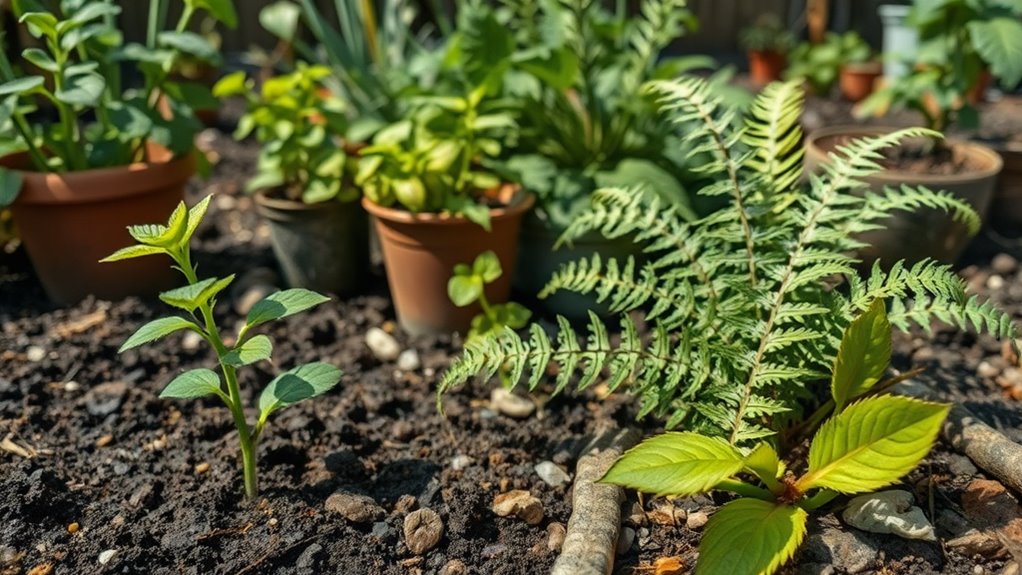Top 5 Mistakes Every New Gardener Makes (And How to Avoid Them)
As a new gardener, you’re probably overwatering your plants, which drowns roots—check the top inch of soil before watering and use pots with drainage. You’ll also plant in the wrong spot, stunting growth; assess sunlight, wind, and microclimates first. Neglecting soil prep harms roots—test pH, add compost, and till gently. Ignoring pests invites disasters; inspect regularly and apply integrated management. Planting at the wrong time risks frost; follow local frost dates. Master these tips to succeed, and uncover deeper strategies for a flourishing garden.
Overwatering Plants and How to Prevent It
Overwatering tops beginner gardening tips for common errors, as it drowns roots and invites disease.
To prevent it, check soil moisture by feeling the top inch; water only if dry.
Use pots with drainage holes and well-draining soil mixes.
Monitor plants closely and adjust your routine for healthier growth. Additionally, optimal plant health can be achieved by ensuring that you understand your plants’ specific watering needs throughout different seasons.
Planting in the Wrong Location and Avoiding Placement Errors
Planting in the wrong location often leads to stunted growth or plant death, much like overwatering’s effects.
You must assess your garden’s sunlight needs, placing sun-loving plants in bright spots and shade-tolerant ones under cover.
Consider wind exposure to prevent damage, and match plants to microclimates by researching their requirements.
Test potential sites first to guarantee they’re ideal for thriving growth. Additionally, understanding sunlight needs is crucial for ensuring your plants receive the right amount of light throughout the day.
Neglecting Soil Preparation and Tips for Proper Setup
Neglecting soil preparation can undermine your garden’s success, much like poor plant placement.
You’ll need to test your soil’s pH and nutrient levels first to match plant needs.
Amend it with compost or organic matter for better drainage and fertility.
Till gently to avoid compaction, ensuring roots thrive and promoting robust growth for a productive garden. Additionally, avoid common soil preparation mistakes such as over-fertilizing, which can harm plant health.
Ignoring Pests and Diseases and Effective Management Strategies
Ignoring pests and diseases in your garden can lead to devastating losses, just as poor soil hampers growth.
You’ll need to inspect plants regularly for early signs like spots or insects.
Use integrated pest management: introduce beneficial insects, apply organic treatments promptly, and rotate crops to break cycles.
Remove infected plants immediately, maintain good airflow, and keep tools sanitized to prevent spread.
Incorporating natural pest control methods can also enhance your garden’s resilience against infestations.
Stay vigilant for a thriving garden.
Planting at the Wrong Time and Timing Your Garden Correctly
When do you typically plant your garden? If you’re planting too early or late, you’ll risk frost damage or stunted growth.
Check your USDA hardiness zone and local frost dates first.
Use a planting calendar to time cool-season crops like lettuce in early spring, and warm-season ones like tomatoes after the last frost.
This precision maximizes yields and prevents common failures. Additionally, understanding seasonal planting can help you choose the right crops for optimal growth throughout the year.

